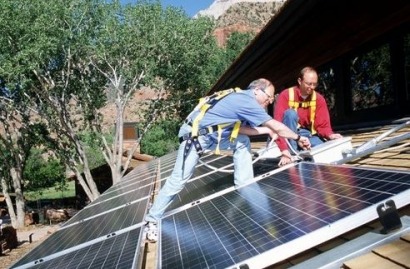
IHS researchers believe annual construction of new PV capacity will drop to less than half of the 15 GW added in 2011. They attribute this drop in activity to major reductions in feed-in tariff (FIT) incentives and re-alignment of long-term PV policies within the context of government austerity programs across Europe.
“Europe’s dependence on just a few countries to drive PV growth accentuates the market’s sensitivity to these shifts,” the report says.
Germany remains Europe’s engine for long-term PV growth with 58 percent of installed PV capacity. But, the analysts say. “In 2011, Germany marginally yields its leadership position to Italy, which is poised to add 8 GW fueled by rapid policy changes and speculation”.
“In addition to these two unrivaled markets, a handful of countries will experience significant PV build-out of over 200 MW annually,” they add.
But, the report concludes, Europe’s process of contraction and re-alignment will lead to more stable, long-term growth for the PV market as the region becomes part of a more geographically diverse, balanced global PV industry.
Europe PV system costs converging with reduced incentives
The IHS analysts found that PV system costs display wide disparity across Europe, but these, they say, are expected to converge as the market matures.
“Germany is the most efficient market to date. The cost variance is largely driven by incentives as players along the value chain adapt prices to expected project returns. As incentives are reduced and downstream players increase their efficiency, system costs continue coming down,” the report says.
In 2011, there has been a trend toward price convergence between countries, particularly in the utility-scale sector, with the European turnkey system cost for ground-based PV averaging €2.31/kW.
Commercial rooftop systems average €0.43/W more than ground-based installations, representing a 41 percent decline from €0.74/W in 2009. Regulatory trends indicate a shift toward rooftop and building-integrated (BIPV) systems that are expected to drive costs down for these sites in the near term, the report says.
The main factor driving down costs is the evolution of module prices, as these account for roughly 50 percent of the system cost. As the PV industry increasingly reduces costs and establishes economies of scale, PV penetration in European markets is expected to continue despite lower incentive rates.
Regulatory Focus Drives Rooftop Installations
Rooftop PV additions have decreased their share of total capacity additions from 80 percent in 2009 to 60 percent in 2011 due in large part to Italy’s current ground-based focus,” the report says.
Going forward, this share is expected to rebound to stabilize at around 90 percent. The main driver for this rooftop concentration is the 11 European countries that push rooftop system deployment through their regulatory structure.
“Further, as regulators across Europe cut incentive rates, rooftop tariffs are being revised less drastically than those for ground-based systems,” the report says. “This trend reflects governments’ belief in PV’s long-term suitability as a rooftop and distributed generation (DG) application.”
For additional information:

